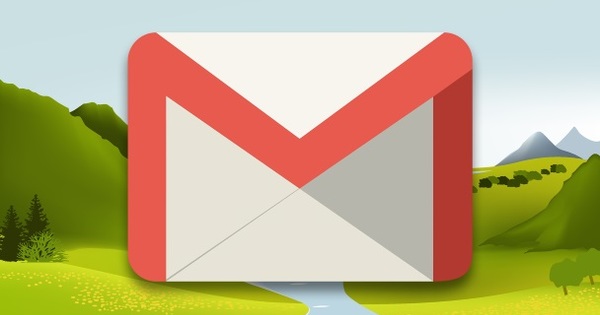More than ten years after the release of Windows 7, the end is now really there: Microsoft permanently stopped support on January 14, 2020. Last year you could only get the most essential updates for the operating system. But, is it smart at all to still work with Windows 7, or should you really switch now?
Not everyone opts for progress or is convinced that Windows 10 is a better operating system than Windows 7. In the business world, Windows 7 still dominated in mid-2018, but since the beginning of 2019 we see that more and more companies have now also switched to Windows. 10. The upgrade from Windows 7 to 10 was free for home users for a long time, so that a large part of home users switched, especially in the first two years after the release of Windows 10. Nevertheless, a large part of home users still swear by Windows 7. In itself it is also an excellent operating system: hardware generally works well and most software still runs effortlessly on Windows 7.

Free upgrade: is it still possible?
It was possible for more than two years to officially upgrade Windows 7 to Windows 10 for free. After that period you could still upgrade via a detour: by using a special site you could still upgrade to Windows 10 for free if you were using software for supported technology: for example if you are visually impaired. The "problem" was that that upgrade page was available to everyone, even if you weren't using that special software. That page is no longer available. However, you can still upgrade to Windows 10 for free. You use a special tool for this. Click there on the button Download utility now, choose in the tool for Update this PC and you can upgrade to Windows 10.
Internet
Windows 7 contains the browser Internet Explorer by default, and the last version released for that operating system was version 11, just like with Windows 10. If you use Windows 7, you don't have to use IE11, because you can also use IE11 on this OS yourself. choose for example Chrome or Firefox. For all these and other browsers, you can still install and use them in Windows 7 without any problems. A switch to Windows 10 will therefore not constitute a major change in this area.
Networking
Windows 10 is more focused on multimedia playback over the network. For example, you can now stream directly from Explorer to a DLNA-supported device in your home network, regardless of the type of file. In Windows 7, this can only be streamed from the Windows Media Player, but it does not offer support for, for example, h264 and h265 encoded files.

Compatibility
Windows 7 is also not so outdated that you cannot run any contemporary software package on it. If you are still using Windows 7, you do not have to worry for the time being that a new version of a software package you use will no longer work under Windows 7. The software specifications often start with Windows 7, increasing to Windows 10. especially Windows XP and Windows Vista which are no longer officially supported. The latest Office 2019 software also works under Windows 7. With regard to drivers, more or less the same applies: if the hardware now works well under Windows 7, it will usually remain that way. There is a very small chance that a new version of a driver will cause your hardware to suddenly stop working in Windows 7. Only with new devices it could happen that the manufacturer no longer offers support for Windows 7.

Safety
The more popular an operating system is, the greater the chance that hackers and other malicious parties will attempt to attack the system and exploit the vulnerabilities. Windows 7 is declining, so more and more hackers ignore this operating system. It is of course impossible to guarantee that a hack will never take place on Windows 7 again, but that the arrows are more likely to be aimed at Windows 10, sounds plausible. That does not mean that the hacking attempts on Windows 10 are successful, because in that respect Windows 10 is a very solid operating system.
Telemetry
One of the downsides of using Windows 10 is that you have to give up a lot of your privacy. For example, by means of telemetry (the remote measurement of data) your use of the operating system is recorded and forwarded to Microsoft, and advertisements are displayed in various places. Now you might think: luckily that is not the case in Windows 7. But you're wrong. Because Windows 7 also collects a lot about your computer. Last year, an additional mandatory update was even released in Windows 7 that ensures that this data is automatically sent to Microsoft at a certain time and that you can no longer disable telemetry. So Microsoft can also read exactly how the system is used from Windows 7. However, there are tricks to get around this (and they work in Windows 10 too). For example, you can use a custom .hosts file. This file is used to block certain Internet and network locations and can be found in Windows 7 in the folder C:\Windows\System32\drivers\etc\. By adding a number of server addresses to that file, you prevent these locations from being reachable from your computer. It's quite a long list, on the site Ghacks.net you can view all the URLs and IP addresses that should be blocked.

What do you miss if you don't use Windows 10?
Windows 10 includes many new additions and changes from Windows 7, both in the foreground and background. The most talked about difference is of course the start menu with the larger tiles. But you can also fine-tune this in Windows 10 or even use a 'classic' start menu app, so that the menu looks like Windows 7 again. If you are a fanatic gamer, Windows 10 offers more options and improvements than Windows 7, like DirectX 12 (Windows 7 only goes up to DirectX 11) and the ability to cast your games live. In general, Windows 10 is more stable and faster (depending on the hardware of your PC) and we can say that the operating system crashes or has to be restarted much less often when an update is downloaded. In addition, the system requirements of Windows 10 are almost the same as those of Windows 7, so upgrading hardware is not necessary. All innovations at a glance:
- Background dynamic updates, less reboots needed
- Virtual desktops: use multiple desktops for an organized screen
- Improved task management
- Additional photo and video editing apps
- Every six months a free update with new functions
- Works better with SSDs

Finally
As of January 14, 2020, Microsoft has definitively pulled the plug on the operating system and no more updates will be released for it. Now it may be time to really switch. Of course you always have the choice to go for another operating system, for example Linux.

